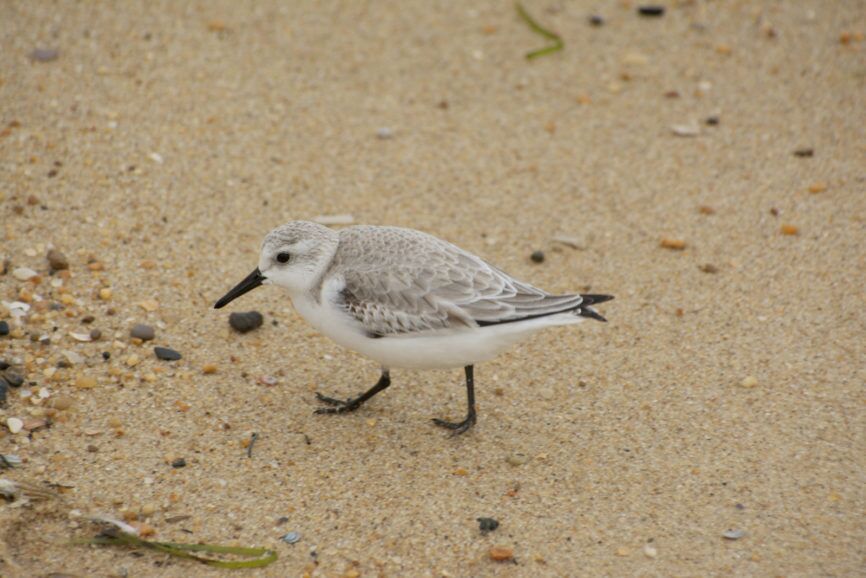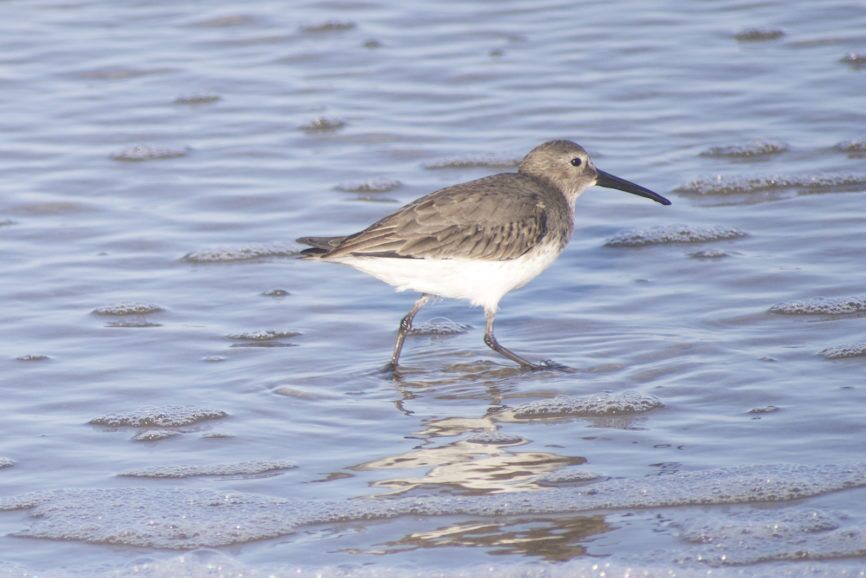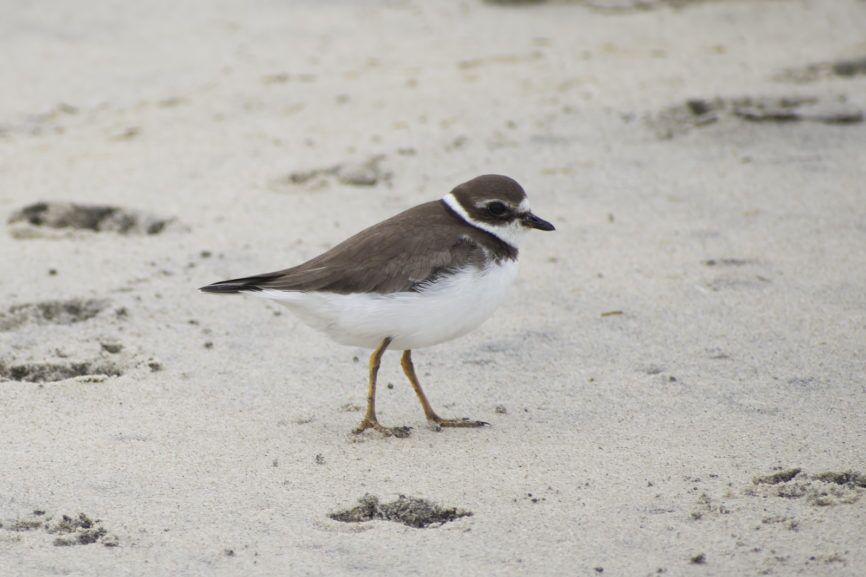Walking along an Outer Banks beach is one of the most wonderful pleasures there can be in life. The sand is soft, the scent of the ocean is salty yet clean, and shorebirds seem to be everywhere at our feet.
At first glance, all those shorebirds seem like a whole bunch of little birds running back and forth from the surf and seagulls. Spend some time on the beach, and the differences among the birds become more noticeable and then fascinating.
This is by no means a definitive list of all shorebirds; not even close, but this list includes some commonly seen members of the sandpiper family of shorebirds.
Sanderling

Anyone who has ever been on an Outer Banks beach has no doubt seen a Sanderling. These little members of the plover family are common on all North Carolina beaches throughout the year. Even though many of them migrate far to the north to breed, quite a few remain locally making them by far the most common shorebird to see.
Although they spend most of their time feeding along the damp edge of incoming waves, they will occasionally take flight, and when they do, Sanderlings are remarkably quick and surprisingly graceful.
Willet

According to the website Birds of North Carolina, the Willet is one of the few shorebirds frequently seen on the Outer Banks beaches that nests in North Carolina. Other sources show nesting as north of the state line. Nonetheless, Willets are very common year-round, typically feeding in wet sand. Their long, sharp beak seeking ghost crabs and other invertebrates buried in the sand.
It’s very common to see Sanderlings and Willets in the same group on the beach.
Interestingly, at one time this bird was considered a delicacy with John James Audubon, the naturalist and ornithologist the Audubon Society is named after, noted the eggs were tasty and that after hatching the birds “grow rapidly, become fat and juicy, and by the time they are able to fly, afford excellent food.”
Dunlin

According to Birds of North Carolina, the Dunlin is the most common member of the sandpiper family to winter in the state. The name Dunlin refers to the dun, or dusky, color of the feathers on its back and head.
The Dunlin is fairly easy to identify. With the exception of the Willet, it is one of the larger sandpipers, and with its dun coloration and long beak, it stands out.
Very common to see Dunlins in the winter. Almost unheard of to see them in the summer. Too bad, too—their breeding plumage is very colorful.
Ruddy Turnstone

A really pretty little bird, the Ruddy Turnstone, isn’t seen all that often, but there is no mistaking it when it’s spotted. Slightly larger and way more colorful than sanderlings, they tend to be on the outer edge toward the dry sand of a feeding flock of sanderlings.
Ruddy Turnstones are most frequently seen in fall, winter, and spring, although they are never as common as many other Outer Banks shorebirds. Rare but occasionally spotted in the summer as well. If seen in the summer, the bird is probably a breeding adult that failed to find a mate in its far northern nesting grounds.
Semipalmated Plover

It is amazing that such a small bird travels so far to breed, but that’s what the Semipalmated Plover does, breeding in the Arctic tundra. However, unlike most plovers that nest in the far north, the Semipalmated Plover places its nest in the gravel along river beds, streams, and lakes. Like its cousin the Piping Plover, the plover was almost hunted to extinction in the early 20th century. It has since made a full recovery, although according to Audubon Society information, warming global temperatures is shrinking its breeding area.
The semipalmated refers to its partially webbed feet.
The most likely time to see this little guy is fall and spring as it stops on its way to farther places. The species tends to migrate a little farther south in the winter.
